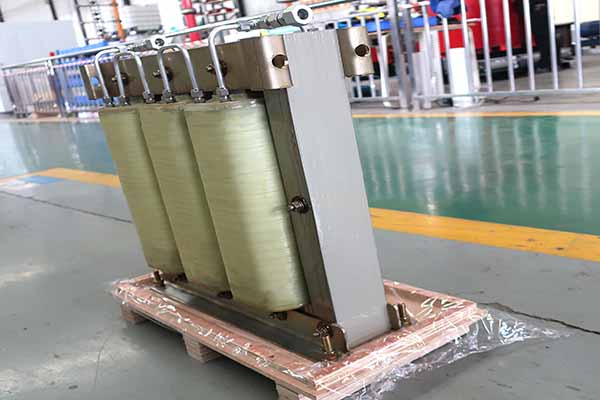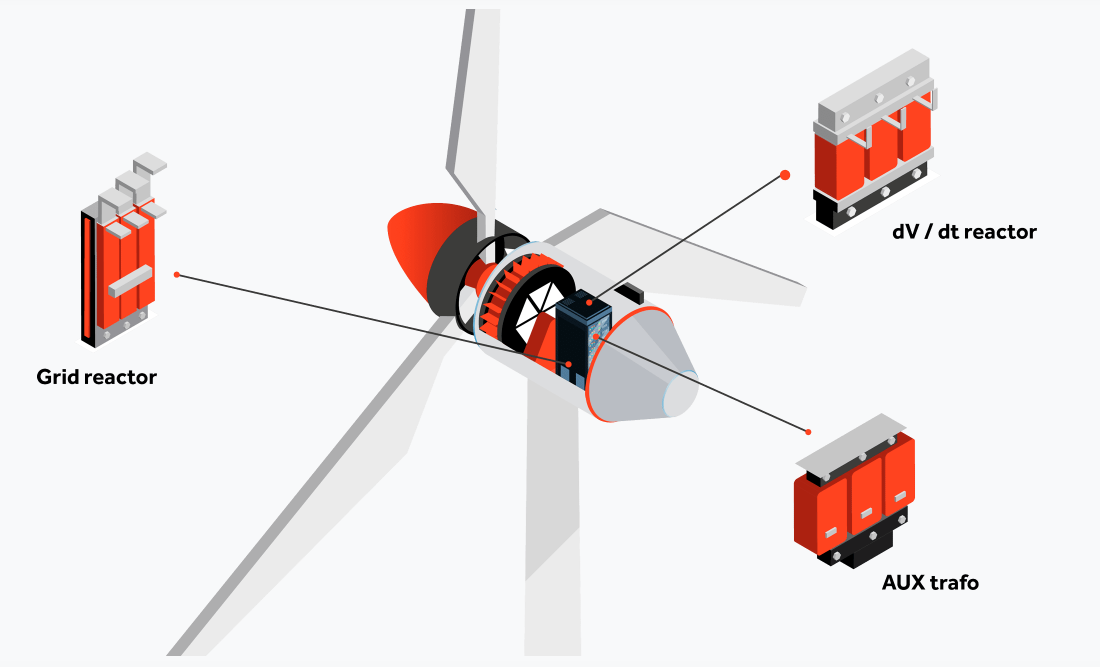The line choke is used for a 4Q converter in wind application. Several converters are connected in parallel to feed the power via a transformer into medium-voltage grid. On the one hand the choke has to smooth the current and on the other hand the choke is part of the line side filter to meet the power quality
Line choke, or AC reactor, is an inductive component that provides impedance in electrical circuits. To meet the demand for ever more energy-efficient components for wind turbine installations, Varelen has developed choke designs specially for inverters used in wind turbines. Their high energy efficiency is achieved through their compact design and through the use of low-loss materials. Varelen's chokes are maintenance-free and have a long lifespan significant contribution to reducing the expensive maintenance of wind turbines.

line chokes provide input impedance which helps reduce harmonic distortion and increase VFD component lifetimes. KEB load reactors help reduce dV/dT switching peaks and increase motor life.
Reduction of Harmonics
Limiting Inrush Currents
Mitigating Voltage Spikes
Improving Power Factor
 Benefits of Line Chokes in Wind Power Systems
Benefits of Line Chokes in Wind Power SystemsGrid chokes are used in both onshore and offshore windturbine converters. The choke ensures that the alternating current fed into the grid exhibits a sinusoidal waveform.
Enhanced Reliability and Efficiency
Protection of Electrical Components
Extended Equipment Lifespan
4. Reduce low frequency interference (harmonics) and relieve the strain on the grid network by compensating for the distortion reactive power induced.
Line chokes ensuring the smooth and efficient operation of wind power converters. They reduce noise, limit inrush currents, mitigate voltage spikes, and improve power factor, all of which contribute to enhanced reliability, efficiency, and equipment longevity. By integrating line chokes into wind power systems, Varelen can ensure that wind farms operate effectively and contribute to a greener energy future.